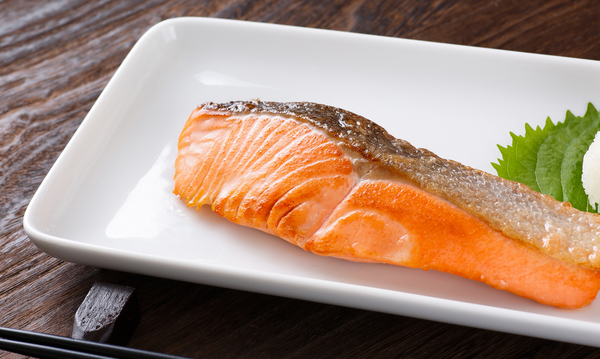Salmon, also known as “三文鱼” in Chinese, is a delicious seafood loved by many. Rich in nutrients, salmon is good for heart and brain health. Have you ever thought about whether you should eat salmon with the skin on? Is fish skin beneficial for your health?
Salmon is one of the healthiest and most popular types of fish. If you enjoy its skin, there is no reason to discard it. In fact, salmon skin is an excellent source of minerals, omega-3 fatty acids, vitamins B and D, and other nutrients. It can also add a crispy texture to any baked or fried salmon fillet, enhancing its overall flavor. Let’s take a look at what nutrition experts consulted by Fox News Digital have to say about salmon skin.
According to a Fox News article on March 28, keeping the skin on salmon fillets not only saves preparation time but may also be healthier than removing it. Registered dietitians suggest that consuming salmon skin can enhance the nutritional value of fish dishes.
“Salmon skin is rich in omega-3 fatty acids. Omega-3 fatty acids help combat inflammation, which is crucial for brain and heart health,” Laura Feldman, a registered dietitian and project director at the Post Campus of Long Island University in Brookville, New York, told Fox News Digital.
While some salmon consumers may think eating fish skin is not a good choice, experts say otherwise.
“Yes, you can eat salmon skin. It contains a higher concentration of omega-3, which is often lacking in our diets,” Deborah Salvatore, a registered dietitian and director of graduate nutrition programs at Long Island University, also told Fox News Digital.
Salvatore explains that consuming salmon skin means a higher fat content in a meal, but considering the lack of omega-3 in our diets and the remarkable benefits of omega-3, including increasing good cholesterol (HDL), lowering blood pressure, and reducing the risk of cardiovascular diseases, it might be worth it.
Adding such a source of omega-3 to your diet may also contribute to overall eye health, beneficial for vision, and possess anti-inflammatory properties.
Salmon skin is also rich in protein and collagen, which support joint and skin health in the body.
“It also provides Vitamin D for stronger bones, B vitamins for energy metabolism, and selenium, a potent antioxidant that protects cells from damage,” Jamie Mok, a registered dietitian in Los Angeles and spokesperson for the Academy of Nutrition and Dietetics, told Fox News Digital.
Mayo Clinic also recognizes that salmon skin, along with its nutrients and omega-3 fatty acids, can help lower cholesterol and high blood pressure, alleviate arthritis pain, and aid in preventing heart disease. The gray area of salmon, between its skin and pink flesh, also contains nutrients and omega-3 fatty acids.
Salmon skin is generally considered safe for consumption, but Mok points out that there are still some potential risks. She notes that salmon skin “may contain environmental pollutants such as dioxins, microplastics, and mercury, depending on the origin of the salmon.”
To minimize the potential impact of environmental pollutants on seafood consumption, Mok suggests consuming a variety of fish, prioritizing those with lower mercury levels like sardines, mackerel, herring, salmon, and anchovies.
According to the Food and Drug Administration (FDA), salmon is classified as a low-mercury fish species.
“American dietary guidelines and recommendations from the American Heart Association suggest consuming at least 8 ounces of fish per week as part of a heart-healthy eating plan, with an emphasis on fatty fish like salmon,” Mok says.
The FDA website also advises that young children as well as pregnant, planning to become pregnant, or breastfeeding women should opt for fish with lower mercury levels.
Whether cooking salmon steaks, salmon fillets, or large cuts of salmon, fresh or frozen salmon skin can be consumed. Making sushi rolls with crispy salmon skin is also a popular practice in the United States.
Salmon skin can be easily cooked. Start by pan-frying the salmon skin-side down. Initially, the skin may seem to stick to the non-stick pan, but within about three minutes, it will curl and become crispy.
Before placing the salmon skin in the pan, ensure that it is completely dry (patting it dry with paper towels or a kitchen towel works well). Some chefs also like to lightly score the skin to enhance the texture, being careful not to cut into the flesh.
Salvatore, who has culinary training, suggests eating skin-on salmon fillets, or crumbling crispy fish skin on top of a salad, or incorporating fish skin cubes into salads as a delicious and nutritious option.

